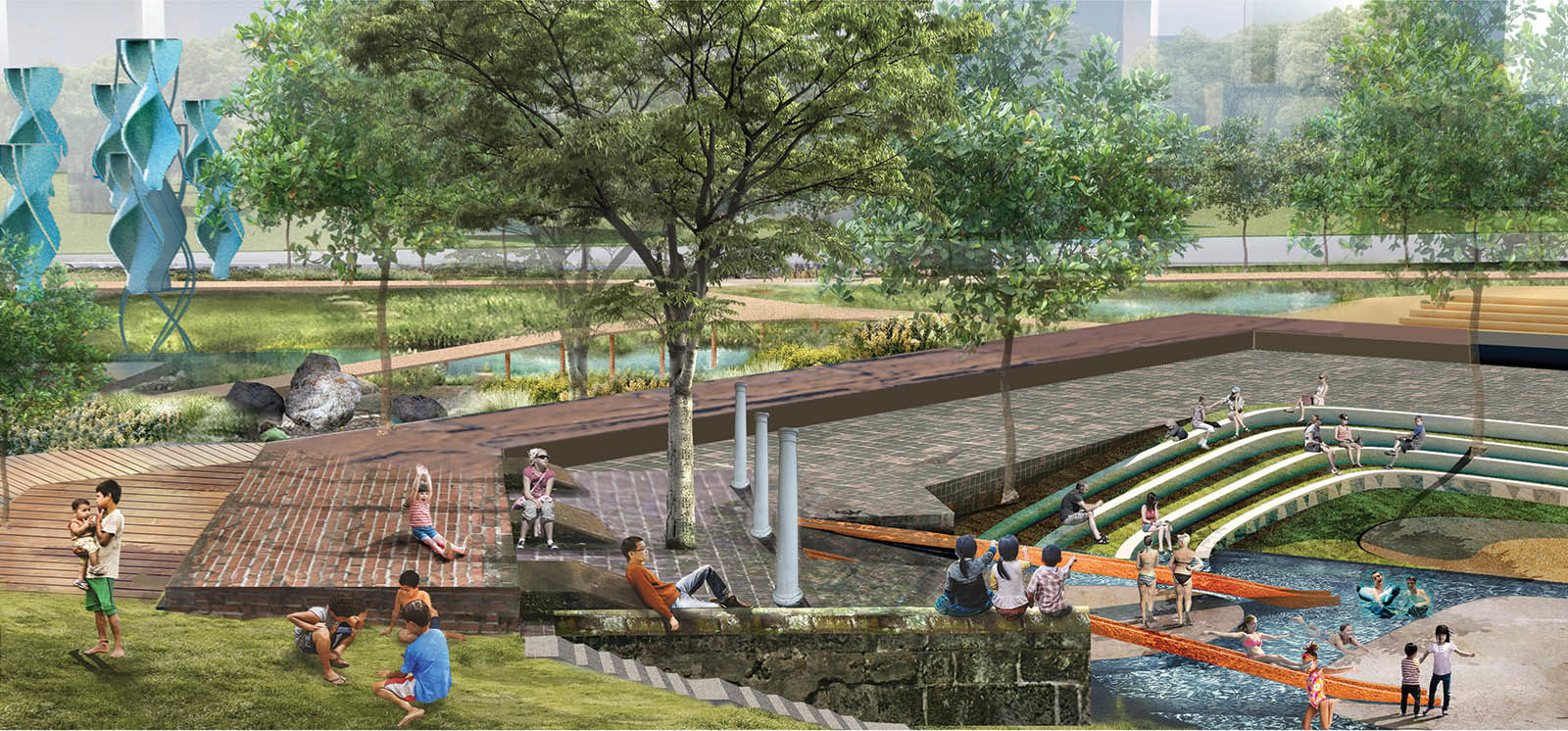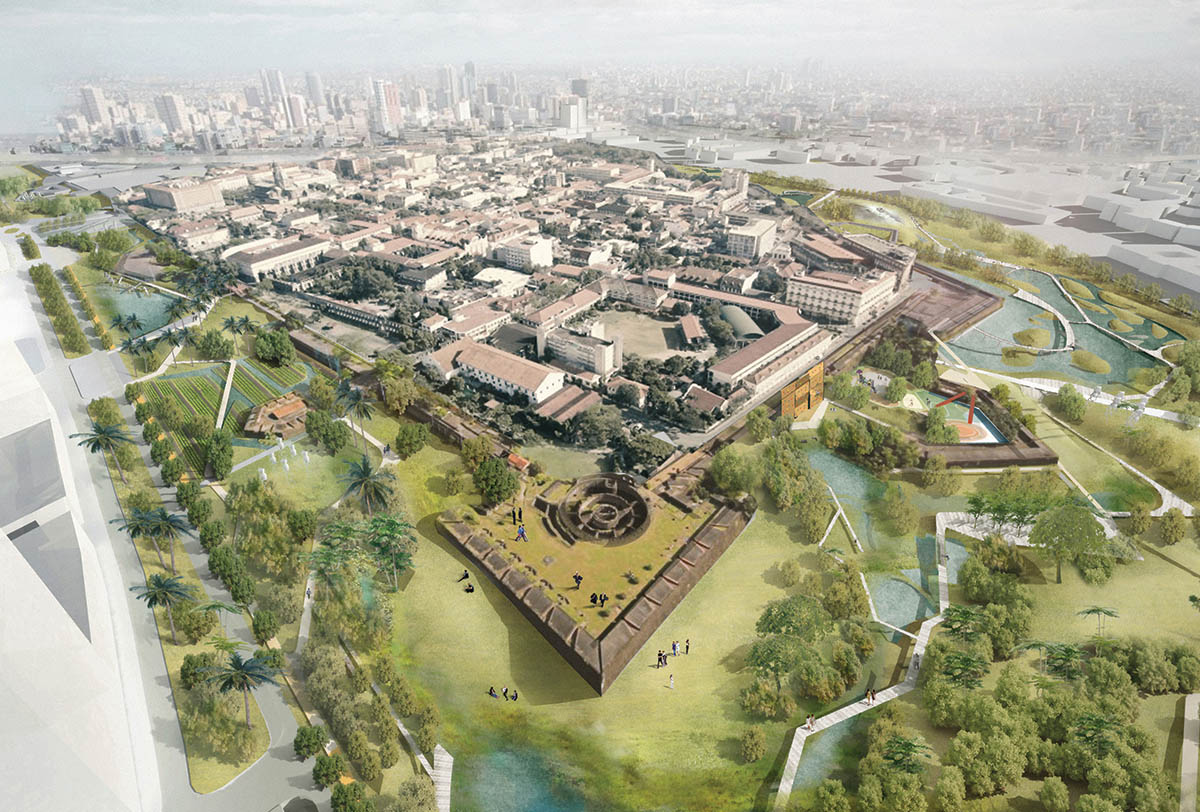Intramuros: Redefining Restoration

by Zheng Alan Cong (MLA ’19), Peilin Li (MLA ’20), Paris Nelson (’19), Bailun Zhang (MLA ’19)
The identity of Intramuros in the context of Greater Manila has always been in question—its very name immediately separates this historic center from the city beyond the walls, or the “extramuros.” While physical boundaries have become more relaxed (or simply changed in form)—the fortification walls partially destroyed, the moat filled in—the legacy of Intramuros’s identity as a “walled-in city” has held on, isolating the core from contemporary urban Manila as it develops. We believe that Intramuros can no longer exist as an urban island. With its richly layered urban and architectural history, it has much to contribute in negotiating with growing issues of urban tension and participating in the conversation of Manila’s future identity.
We would like to recognize the significant work performed by the Intramuros Administration (IA) since 1979 to restore and revitalize this important historic area. In approaching this site, we wholeheartedly share their goals of community engagement, and ensuring that Intramuros continues to be a destination and resource for both tourists and locals of Manila. We especially hope to build upon their past and current initiatives for renewed local participation in the public spaces of Intramuros.
While we hope to build upon the success of the IA’s public events and community engagement initiatives, we believe that an alternative approach to the existing attitude toward historic preservation and restoration is critical for Intramuros’s continued participation in the rapidly evolving urban landscape of Greater Manila. Rather than rebuilding the site to perfectly imitate its historic form, we hope to learn from and identify thevalue in the layered contributions to the area throughout its history, acknowledging the history of Intramuros in a way that works for contemporary and future Manila.

Our ultimate goal is to create a new network of public space that integrates programming that serves all local populations of Intramuros and Greater Manila. In our visit to the site, we observed how the diverse population groups within the walls are informally zoned (the student belt; the tourist route with adjacent office pockets as public front; the hidden informal settler center), and how this creates division between these people and their experiences of Intramuros. We believe that this is a problem inextricable from the lack of public space within and around the walls (indicative of a pervasive problem in Manila) and that the introduction of a new system of public space will create zones of interface between populations vital to the vibrant Intramuros urban life envisioned by the IA. Through a phased plan that reclaims the historic wall and moat and integrates underutilized spaces within Intramuros’s walls, we hope to transform existing spaces of boundary and exclusion into spaces of interaction and integration.
Informed by the historic plans of destroyed sacred structures, the contemporary recall filters light and shadow to recall and celebrate anew thoughtful and contemplative spaces.